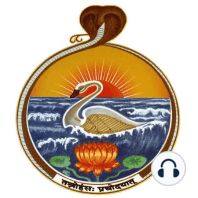63 min listen

24 – The Sensitive Eye of the Yogi | Patanjali Yoga Sutras | Swami Tattwamayananda
24 – The Sensitive Eye of the Yogi | Patanjali Yoga Sutras | Swami Tattwamayananda
ratings:
Length:
75 minutes
Released:
Feb 17, 2019
Format:
Podcast episode
Description
Lecture by Swami Tattwamayananda. Viveka means the ability to understand what is real and worthwhile. The first kind of Duhkha, suffering, described in the fifteenth sutra is Parinama Duhkha. It is the understanding that happy and unhappy experiences are changeable. Yudhishthira says in the Mahabharata that the greatest wonder is that every day we see people dying, but we think we will be immortal. This Duhkha is possible only for Yogis and people with spiritual insight. Tapa Duhkha is suffering due to not getting what we want. Buddha’s example of his concern for the welfare of all human beings is given for Parinama Duhkha. It is helpful in spiritual life. Samskara Duhkha comes from actions that create grief prompted from Vasanas from remaining in the Karmashaya. Vyasa says a Yogi develops a sensitive eye and is able to see future suffering before it happens. This is the Heya, the problem to be eradicated. Verses: II.15, II.16
Released:
Feb 17, 2019
Format:
Podcast episode
Titles in the series (100)
16 – Attaining Inner Contentment and Clarity of Mind | Patanjali Yoga Sutras | Swami Tattwamayananda by Yoga Sutras and the World of the Human Mind